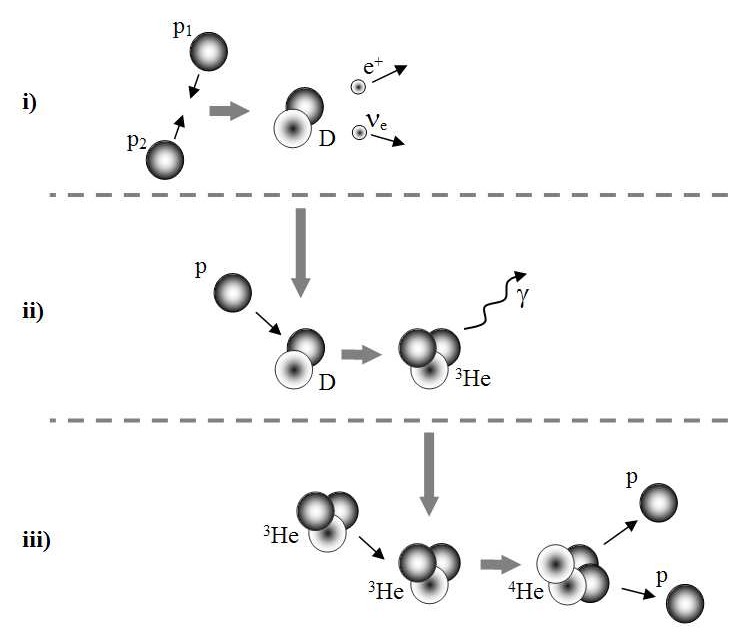[/caption]
Ancient astronomers thought that the Sun was a ball of fire, but now astronomers know that it’s nuclear fusion going on in the core of stars that allows them to output so much energy. Let’s take a look at the conditions necessary to create nuclear fusion in stars and some of the different kids of fusion that can go on.
The core of a star is an intense environment. The pressures are enormous, and the temperatures can be greater than 15 million Kelvin. But this is the kind of conditions you need for nuclear fusion to take place. Once these conditions are reached in the core of a star, nuclear fusion converts hydrogen atoms into helium atoms through a multi-stage process.
To complete this process, two hydrogen atoms are merged together into a deuterium atom. This deuterium atom can then be merged with another hydrogen to form a light isotope of helium – 3He. Finally, two of the helium-3 nuclei can be merged together to form a helium-4 atom. This whole reaction is exothermic, and so it releases a tremendous amount of energy in the form of gamma rays. These gamma rays must make the long slow journey through the star, being absorbed and then re-emitted from atom to atom. This brings down the energy of the gamma rays to the visible spectrum that we see streaming off the surface of stars.
This fusion cycle is known as the proton-proton chain, and it’s the reaction that happens in stars with the mass of our Sun. If stars have more than 1.5 solar masses, they use a different process called the CNO (carbon-nitrogen-oxygen) cycle. In this process, four protons fuse using carbon, nitrogen and oxygen as catalysts.
Stars can emit energy as long as they have hydrogen fuel in their core. Once this hydrogen runs out, the fusion reactions shut down and the star begins to shrink and cool. Some stars will just turn into white dwarfs, while more massive stars will be able to continue the fusion process using helium and even heavier elements.
We have written many articles about stars here on Universe Today. Here’s an article about a star that recently shut down its fusion reactions, and here’s a star that re-ignited its fusion reactions.
If you’d like more information on stars, check out Hubblesite’s News Releases about Stars, and here’s the stars and galaxies homepage.
We have recorded several episodes of Astronomy Cast about stars. Here are two that you might find helpful: Episode 12: Where Do Baby Stars Come From, and Episode 13: Where Do Stars Go When they Die?
References:
http://www.jet.efda.org/fusion-basics/what-is-fusion/
http://hyperphysics.phy-astr.gsu.edu/hbase/astro/procyc.html
http://large.stanford.edu/courses/2011/ph241/olson1/

